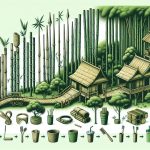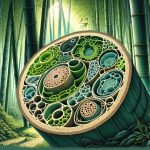Are you looking to enhance your outdoor gear?
Discover the benefits of utilizing natural fabrics! From breathable cotton to insulating wool and sustainable hemp, this ultimate guide will help you choose the right fabric for your outdoor activities.
Compare natural fabrics against synthetic ones and learn how to take care of your gear.
Get ready for a more comfortable and eco-friendly outdoor experience.
Let’s dive in!
Table of Contents
Benefits of Natural Fabrics in Outdoor Gear
When it comes to outdoor gear, you can’t go wrong with natural fabrics for their numerous benefits. Natural fabrics, such as cotton, wool, and bamboo, have exceptional moisture wicking properties that make them ideal for outdoor activities. These fabrics have the ability to absorb and transport moisture away from the body, keeping you dry and comfortable even during intense physical activities.
In addition to their moisture wicking properties, natural fabrics are also eco-friendly and sustainable. Unlike synthetic fabrics, which are made from petroleum-based products, natural fabrics are derived from renewable resources. Cotton is grown from plants, wool is sheared from sheep, and bamboo is harvested from sustainable bamboo forests. Using natural fabrics in outdoor gear not only reduces our dependence on fossil fuels, but also minimizes the environmental impact of textile production.
Furthermore, natural fabrics are biodegradable, meaning they can decompose naturally without harming the environment. This makes them a better choice for the planet compared to synthetic fabrics, which can take hundreds of years to break down.
Cotton: A Versatile and Breathable Fabric
Cotton is a versatile and breathable fabric that offers several benefits for outdoor gear.
Firstly, its moisture-wicking properties help to keep you dry and comfortable during physical activities.
Secondly, cotton is known for its durability, making it suitable for outdoor environments where gear may be exposed to rough conditions.
Lastly, cotton is an eco-friendly and sustainable option, as it’s a natural and biodegradable material.
Moisture-Wicking Properties of Cotton
To experience the full benefits of cotton’s moisture-wicking properties, you need to choose the right fabric. Cotton is a versatile and breathable fabric that’s well-suited for outdoor activities. Its moisture-wicking properties make it an excellent choice for activities that involve sweating or exposure to water.
Here are some benefits of cotton for outdoor activities:
- Absorbs and evaporates moisture quickly, keeping you dry and comfortable.
- Allows air to circulate, preventing overheating.
- Natural and hypoallergenic, reducing the risk of skin irritation.
- Durable and long-lasting, withstanding rugged outdoor conditions.
- Versatile and easy to care for, making it ideal for camping, hiking, or any outdoor adventure.
Durability in Outdoor Environments
How well does cotton hold up in the rugged conditions of the great outdoors? Cotton is often praised for its versatility and breathability, but when it comes to durability in outdoor environments, it may not be the best choice. While cotton is known for its comfort and softness, it is not as resilient as synthetic fabrics when it comes to longevity and fabric performance. In outdoor activities that involve rough terrain or extreme weather conditions, cotton can easily become damaged or worn out. To illustrate this, here is a comparison table showcasing the durability of cotton compared to synthetic fabrics:
| Fabric | Longevity | Fabric Performance |
|---|---|---|
| Cotton | Low | Moderate |
| Synthetic | High | High |
As you can see, synthetic fabrics tend to outperform cotton in terms of longevity and fabric performance in outdoor environments.
Eco-Friendly and Sustainable
When it comes to choosing an eco-friendly and sustainable fabric for outdoor gear, you’ll find that cotton is a versatile and breathable option. Cotton is a natural fiber that comes from the cotton plant, making it a renewable resource. Here are some reasons why cotton is a great choice for eco-friendly options and sustainable fabric alternatives:
- Cotton is biodegradable, meaning it can decompose naturally without harming the environment.
- Cotton is a renewable resource, as it can be grown and harvested year after year.
- Cotton is breathable, allowing air to circulate and keeping you comfortable during outdoor activities.
- Cotton is hypoallergenic, making it a great choice for those with sensitive skin.
- Cotton is easy to care for, as it can be machine washed and dried without losing its shape or softness.
Consider choosing cotton for your outdoor gear to enjoy its versatility, breathability, and eco-friendly qualities.
Wool: The Ultimate Insulator for Outdoor Activities
For the ultimate insulator in outdoor activities, you can rely on wool to keep you warm and comfortable. Wool is a natural fabric that offers numerous benefits when it comes to cold weather. Unlike synthetic insulation, wool has the ability to regulate temperature and keep you warm even when wet. This is because wool fibers have a natural crimp that traps air, providing excellent insulation. In contrast, synthetic insulation tends to lose its insulating properties when wet.
Here is a comparison between wool and synthetic insulation:
| Wool | Synthetic Insulation |
|---|---|
| Regulates temperature | Loses insulation properties when wet |
| Moisture-wicking | Retains moisture |
| Odor-resistant | May develop unpleasant odor |
| Naturally fire-resistant | Requires chemical treatment for fire resistance |
As you can see, wool has a natural advantage over synthetic insulation in many aspects. It not only keeps you warm and comfortable but also helps regulate moisture and odor. Additionally, wool is naturally fire-resistant, making it a safer choice for outdoor activities. So, if you’re looking for the ultimate insulator for your outdoor adventures, wool is the way to go. Stay warm, dry, and comfortable with this amazing natural fabric.
Hemp: A Sustainable and Durable Fabric Option
To incorporate a sustainable and durable fabric option into your outdoor gear, consider hemp. Hemp is a versatile plant that has been used for centuries in various industries, including the fashion industry. Here are a few reasons why hemp is a great choice for outdoor gear:
-
Sustainability: Hemp is a highly sustainable crop that requires minimal water, pesticides, and fertilizers to grow. Its cultivation techniques are environmentally friendly, making it a more eco-friendly choice compared to other fabrics.
-
Durability: Hemp fibers are known for their strength and durability. They’re resistant to abrasion, tearing, and stretching, making hemp fabric ideal for outdoor gear that needs to withstand rugged conditions.
-
Breathability: Hemp fabric allows air to pass through easily, making it a breathable option for outdoor gear. This helps regulate body temperature and prevents overheating during physical activities.
-
UV Protection: Hemp fabric has natural UV-resistant properties, providing protection against harmful sun rays. This makes it a suitable choice for outdoor gear that offers added sun protection.
-
Versatility: Hemp fabric can be blended with other materials to enhance its properties. It can be mixed with organic cotton or recycled polyester to create a fabric that’s both sustainable and durable.
Natural Fabrics Vs. Synthetic Fabrics: a Comparison
When it comes to natural fabrics versus synthetic fabrics in outdoor gear, there are two main points of comparison to consider: performance and environmental impact.
Natural fabrics like cotton and hemp offer breathability and comfort.
Synthetic fabrics like polyester and nylon provide moisture-wicking and quick-drying properties.
In terms of environmental impact, natural fabrics are biodegradable and renewable.
Synthetic fabrics are derived from petrochemicals and take longer to decompose.
Performance of Natural Fabrics
When comparing natural fabrics and synthetic fabrics in terms of performance, you’ll find that natural fabrics offer unique advantages.
Natural fabrics have undergone extensive performance testing to ensure their durability and functionality in outdoor gear.
Here are five reasons why natural fabrics outshine their synthetic counterparts:
-
Breathability: Natural fabrics, such as cotton and linen, allow air to circulate, keeping you cool and comfortable during outdoor activities.
-
Moisture management: Natural fabrics have superior moisture-wicking properties, absorbing sweat and keeping you dry.
-
Odor resistance: Natural fabrics naturally resist odor-causing bacteria, helping you stay fresh and odor-free.
-
Sustainability: Natural fabrics are renewable and biodegradable, making them a more eco-friendly choice for outdoor gear.
-
Comfort: Natural fabrics are soft and gentle on the skin, providing a comfortable and luxurious feel.
Environmental Impact Comparison
How do natural fabrics compare to synthetic fabrics in terms of environmental impact?
When it comes to the environmental impact, natural fabrics have a clear advantage over synthetic fabrics. Natural fabrics, such as cotton, hemp, and wool, are biodegradable and renewable resources. They require less energy and water during production compared to synthetic fabrics like polyester and nylon, which are derived from petrochemicals.
Additionally, natural fabrics have a lower carbon footprint and release fewer greenhouse gases when they decompose. By choosing outdoor gear made from natural fabrics, you’re actively promoting sustainability and reducing your ecological footprint.
Natural fabrics play a crucial role in minimizing the environmental impact of outdoor gear production and consumption, making them a more eco-friendly choice for outdoor enthusiasts.
How to Choose the Right Natural Fabric for Your Gear
To select the appropriate natural fabric for your outdoor gear, consider the specific needs and requirements of your activities. Choosing natural fabrics for your gear offers several benefits that can enhance your outdoor experience. Here are a few tips to help you make the right choice:
-
Consider the Climate: Different natural fabrics have varying levels of breathability and insulation. If you’re going to be in a hot and humid environment, opt for fabrics like linen or hemp that are lightweight and breathable. For colder climates, wool or alpaca can provide excellent insulation.
-
Evaluate Durability: Look for natural fabrics that are known for their strength and durability. Cotton canvas and denim are popular choices for their ruggedness and resistance to wear and tear.
-
Check for Moisture-wicking Properties: Natural fabrics like bamboo and merino wool have excellent moisture-wicking capabilities, keeping you dry and comfortable during intense physical activities.
-
Consider Environmental Impact: Natural fabrics are often more sustainable and eco-friendly compared to synthetic materials. Look for fabrics that are produced using organic farming practices and are free from harmful chemicals.
-
Consider Maintenance: Some natural fabrics require special care, such as handwashing or air-drying. Consider your willingness and ability to maintain the fabric before making your decision.
Care and Maintenance Tips for Natural Fabric Outdoor Gear
To ensure the longevity of your natural fabric outdoor gear, regularly and gently clean and maintain it. Here are some maintenance tips and washing instructions to help you keep your gear in top condition.
First, always check the care label or manufacturer’s instructions for specific cleaning recommendations. Different natural fabrics may require different cleaning methods, so it’s important to follow these instructions to avoid damaging your gear.
For general cleaning, you can start by removing any dirt or debris from your gear using a soft brush or cloth. If your gear is machine washable, use a gentle cycle with cold water and a mild detergent. Avoid using bleach or harsh chemicals as they can weaken the natural fibers.
After washing, make sure to thoroughly rinse your gear to remove any detergent residue. Residue can cause the fabric to become stiff or irritate your skin. Gently squeeze out any excess water and avoid wringing or twisting the fabric, as this can lead to stretching or distortion.
When drying your gear, air drying is usually the best option. Hang it up or lay it flat in a well-ventilated area away from direct sunlight or heat sources. This will help preserve the natural fibers and prevent shrinkage.
Frequently Asked Questions
Are Natural Fabrics More Expensive Than Synthetic Fabrics for Outdoor Gear?
Natural fabrics for outdoor gear can be more expensive than synthetic fabrics, but it’s important to consider the cost comparison along with their environmental impact. So, weigh your options and make an informed choice.
Can Natural Fabrics Withstand Harsh Weather Conditions?
Yes, natural fabrics can withstand harsh weather conditions. Their durability and performance make them a reliable choice for outdoor gear. You’ll find that they can handle the elements and provide lasting protection.
Are There Any Natural Fabrics That Are Quick-Drying for Outdoor Activities?
Yes, there are natural fabrics that are quick-drying for outdoor activities. They have their advantages, like being breathable and eco-friendly, but also some disadvantages, such as not being as durable as synthetic fabrics.
Can Natural Fabrics Be Treated to Make Them Water-Resistant?
Yes, natural fabrics can be treated to make them water-resistant. There are various waterproofing techniques available. However, it’s important to consider the pros and cons of using natural fabrics in outdoor gear manufacturing.
Are There Any Natural Fabrics That Are Suitable for Extreme Cold Temperatures?
Yes, there are natural fabric alternatives for extreme cold. Wool and down are popular choices. They provide excellent insulation, but can be bulky and may not be as effective when wet.
- How Does Ring Spun Cotton Affect Garment Fit and Shape Retention? - August 13, 2024
- What Are the Challenges in Producing Ring Spun Cotton? - August 13, 2024
- Is Ring Spun Cotton Suitable for Plus-Size Clothing? - August 13, 2024





